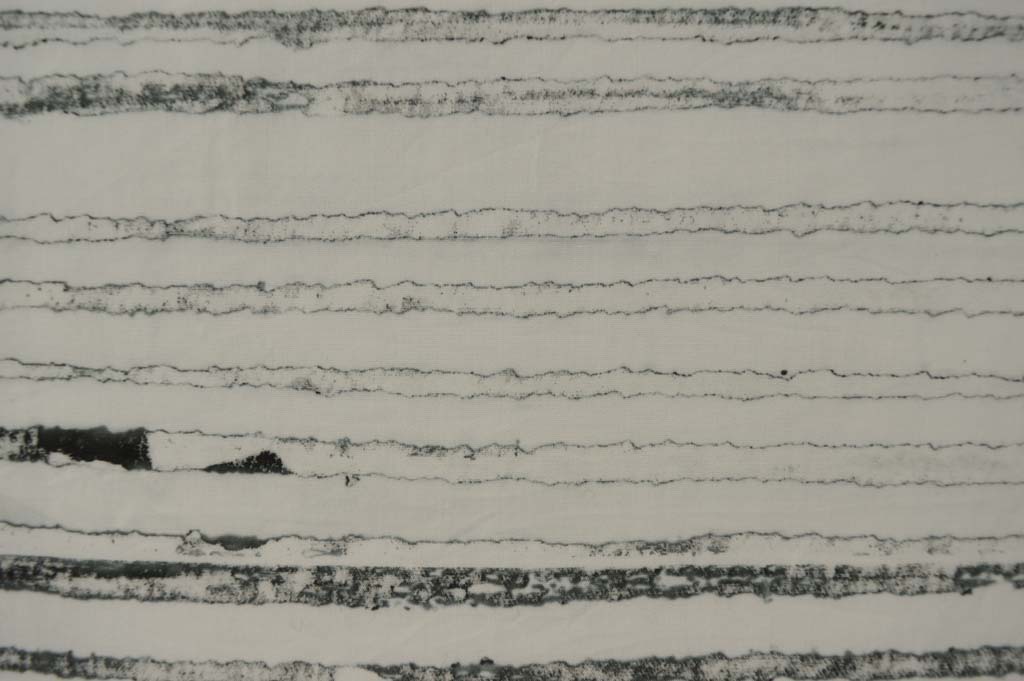I have an itch. I can feel it growing inside of me, gaining momentum. It’s at the edge of my consciousness now whatever I’m doing. It needs scratching!
Yep, all the ideas about a new series of works on the printing and publishing industry that have been brewing in my head for weeks have started to come together. This is how I work. I don’t use sketchbooks when developing new ideas but I do like to have something pinned to my design wall or sat on my desk that is always there, in the corner of my eye, as I work on other things.
I started thinking about printing and how it has, as an industry, changed and continues to change when I printed some fabrics using simple grid based breakdown screens in July. I made a small quilt called Process Colour for my stand at Festival of Quilts expecting it to be a one-off. But I don’t think it’s going to be. Actually I know it isn’t going to be. I liked how the simplicity of a grid become complex it broke down. I liked printing in only black. I cut some thin strips of the printed fabrics. There is no text but they somehow remind me of newsprint. And so my mind has continued to churn ideas around.
I thought about introducing text on top of some of the fabrics using old wooden print blocks. I wasn’t sure how but I’ve had the blocks sat next to my computer for a while now and they have been the catalyst that has caused an ‘idea’ explosion in my head. I need to get the ideas out. I need to play. I need to print!



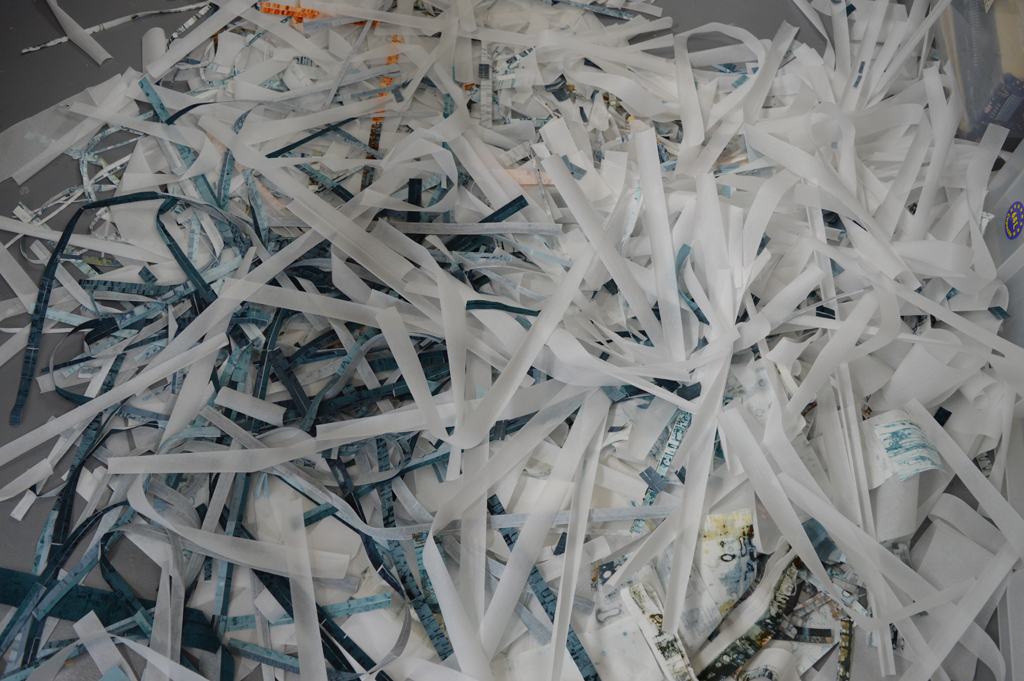 I recently
I recently 

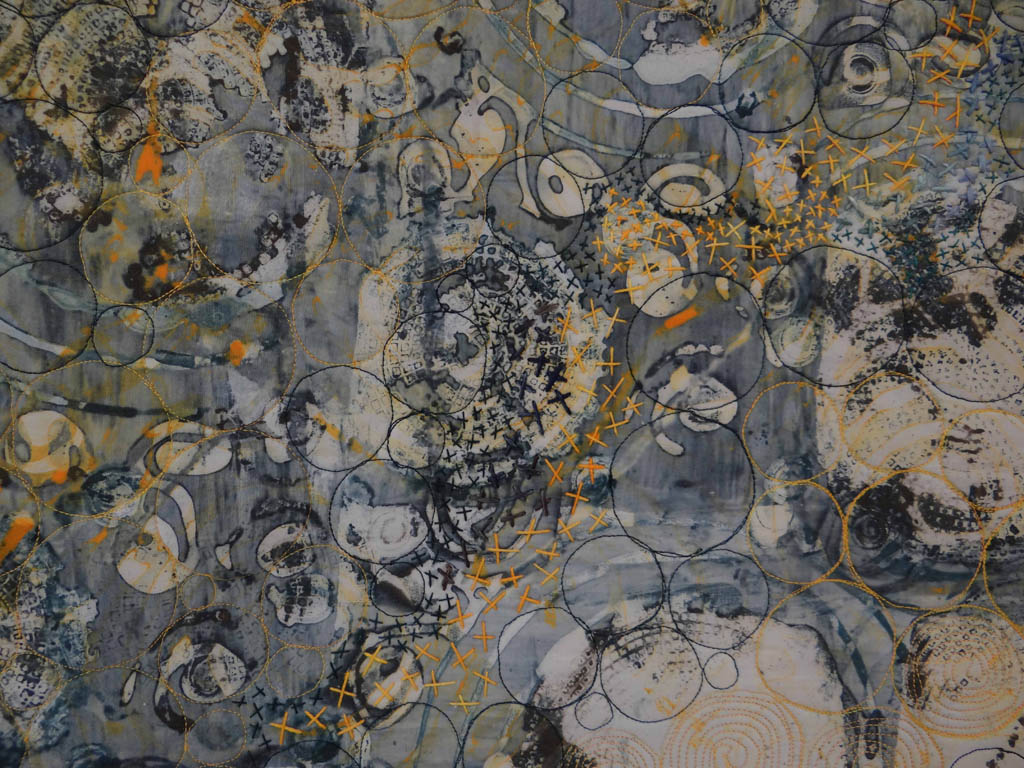
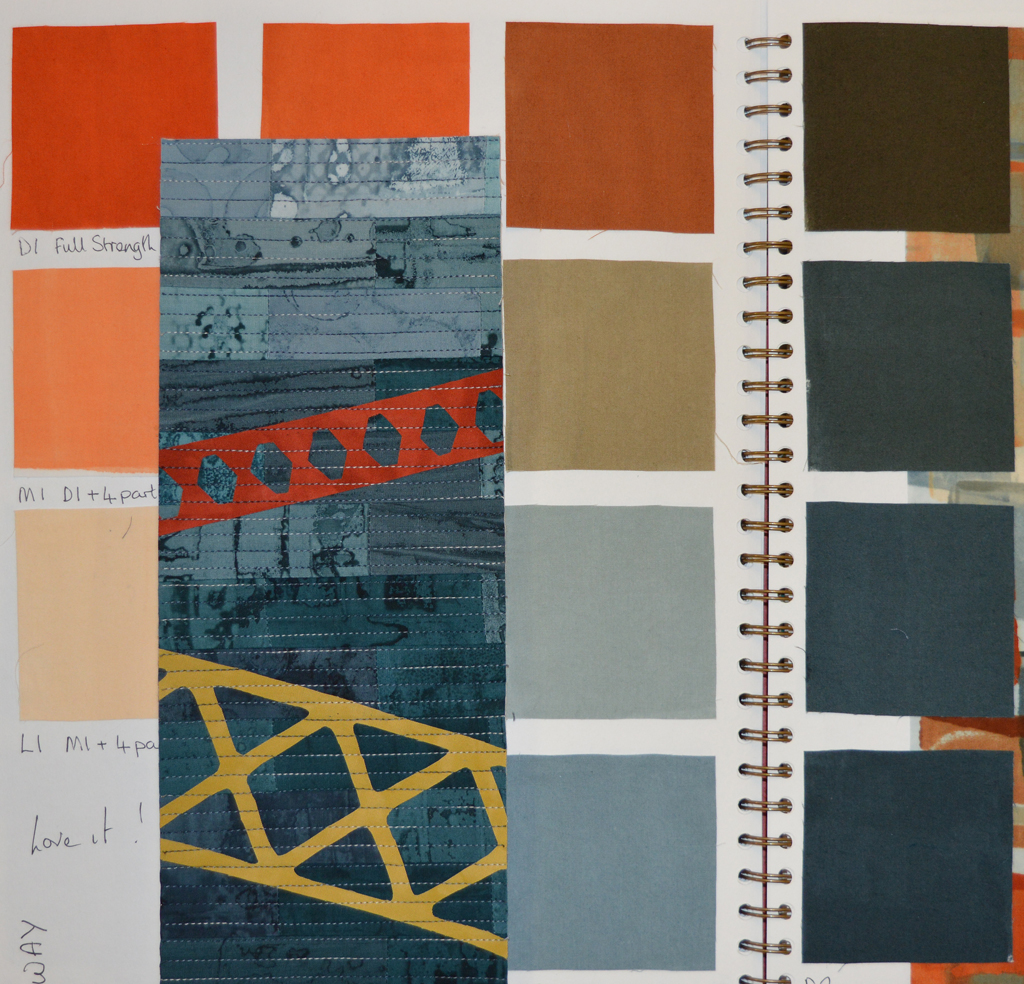 I started sampling ideas for my new series using a selection of dyed fabrics pulled from my stash. Early outcomes did not exactly grab me so I also tried using stencils to take colour out (discharge) and to add colour. Interesting but still not right. I added back colour. And got rather depressed until I decided to change the scale and to add stitch. Bingo!
I started sampling ideas for my new series using a selection of dyed fabrics pulled from my stash. Early outcomes did not exactly grab me so I also tried using stencils to take colour out (discharge) and to add colour. Interesting but still not right. I added back colour. And got rather depressed until I decided to change the scale and to add stitch. Bingo!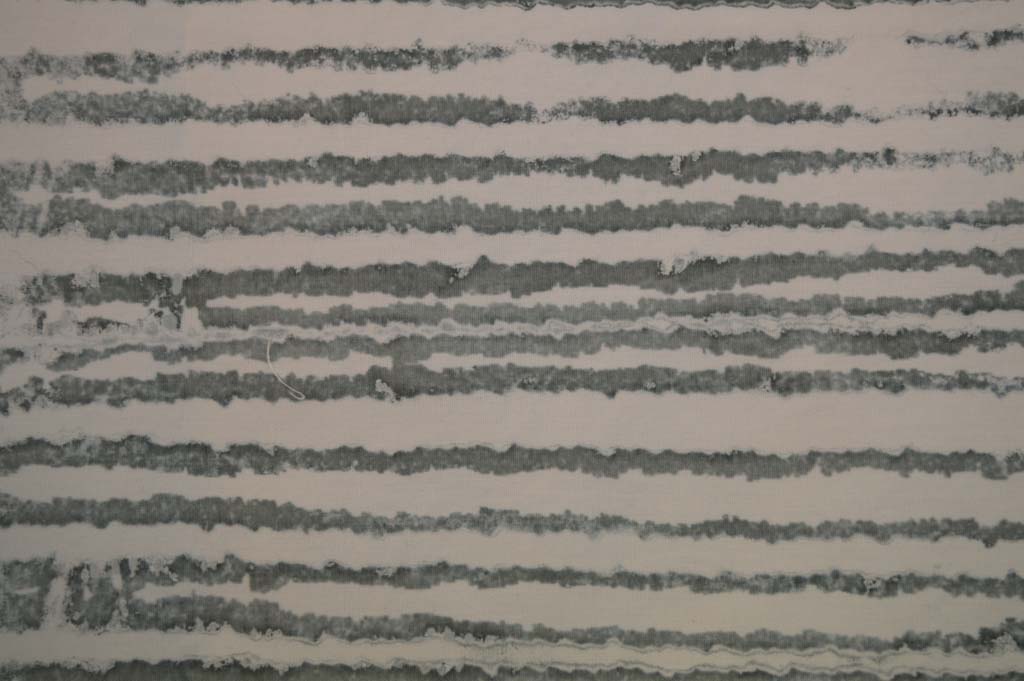 In between wrapping presents last week I did manage to prepare and pull some breakdown screens. I got some really promising marks by using a screen made with torn strips of freezer paper gently ironed onto the screen before rollering on a very thin layer of black thickened dye. I also made a screen using strips of torn masking tape. I wanted the marks to be delicate so pulled through with lots of print paste. And replaced the paste if it got tinted with colour.
In between wrapping presents last week I did manage to prepare and pull some breakdown screens. I got some really promising marks by using a screen made with torn strips of freezer paper gently ironed onto the screen before rollering on a very thin layer of black thickened dye. I also made a screen using strips of torn masking tape. I wanted the marks to be delicate so pulled through with lots of print paste. And replaced the paste if it got tinted with colour.

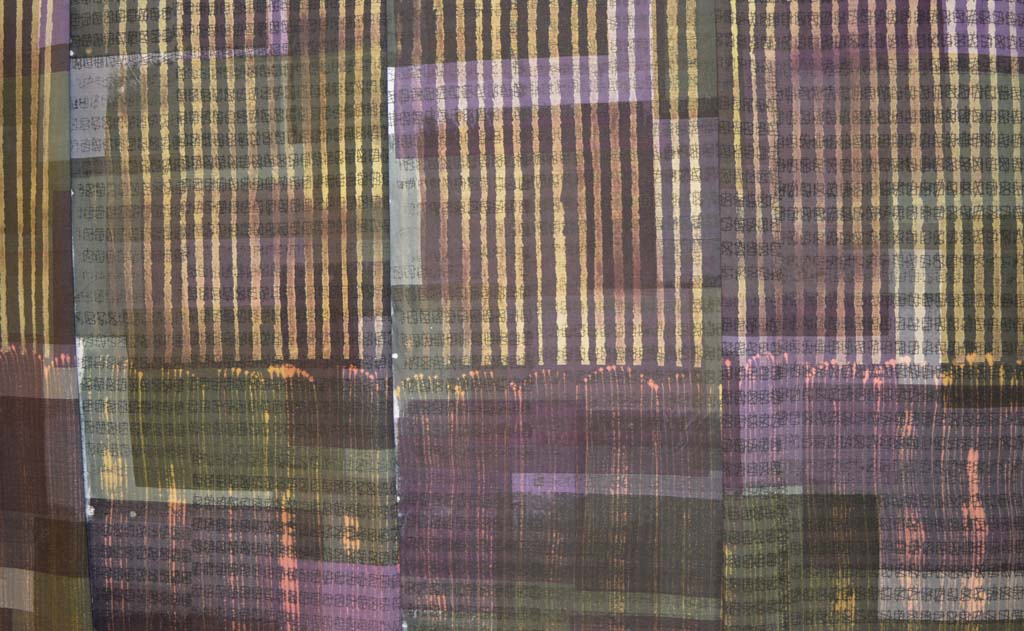 It is a good job that I have a Plan B as my experiments over the last week or so have failed to give me a 'WOW' moment. The results didn't even fall into the 'Ugly Duckling' category of pieces that might fit in with what I'm trying to achieve with some additional process. The experiment has been educational but not in any way that is connected with what I think I'm trying to achieve.
It is a good job that I have a Plan B as my experiments over the last week or so have failed to give me a 'WOW' moment. The results didn't even fall into the 'Ugly Duckling' category of pieces that might fit in with what I'm trying to achieve with some additional process. The experiment has been educational but not in any way that is connected with what I think I'm trying to achieve.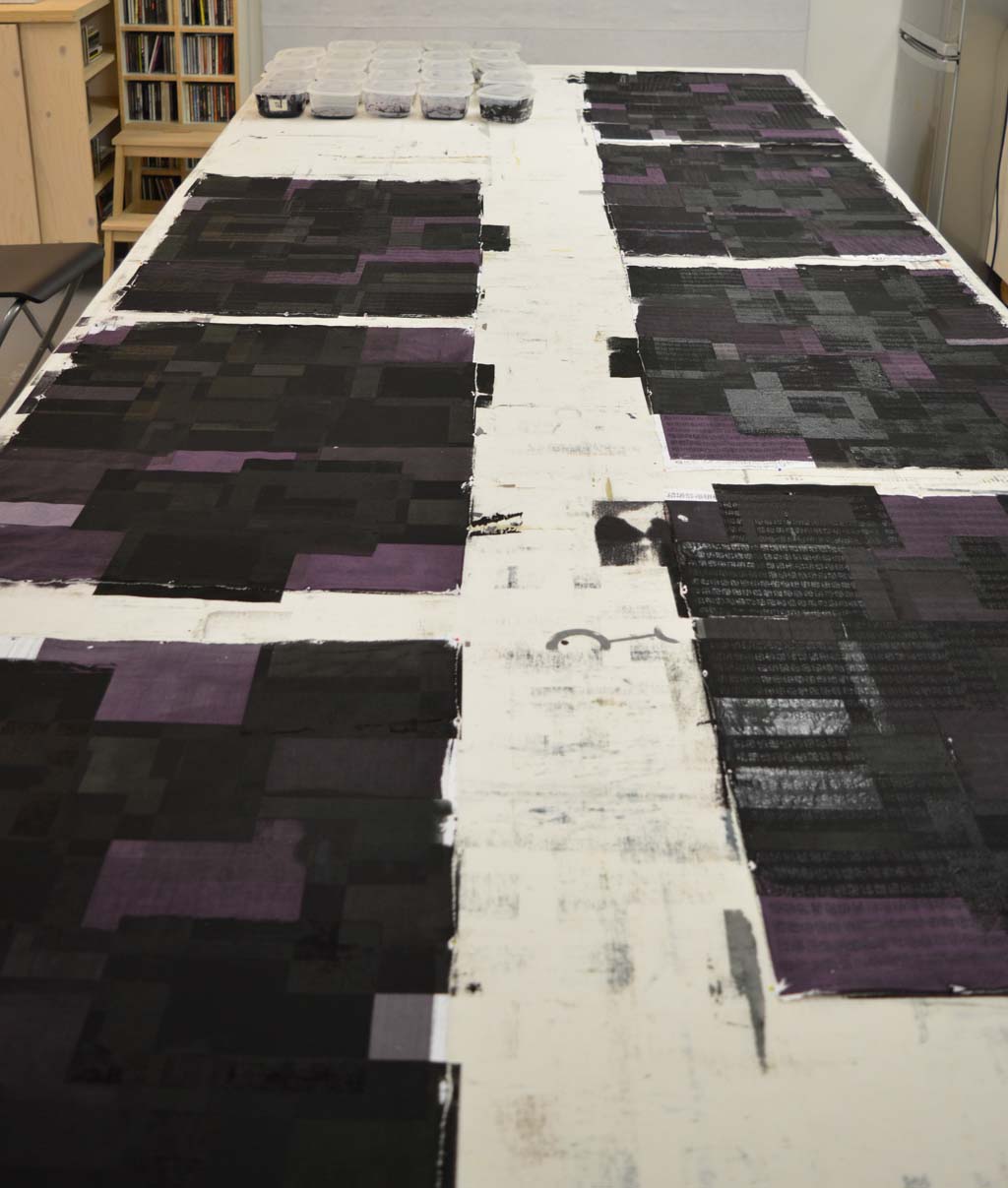
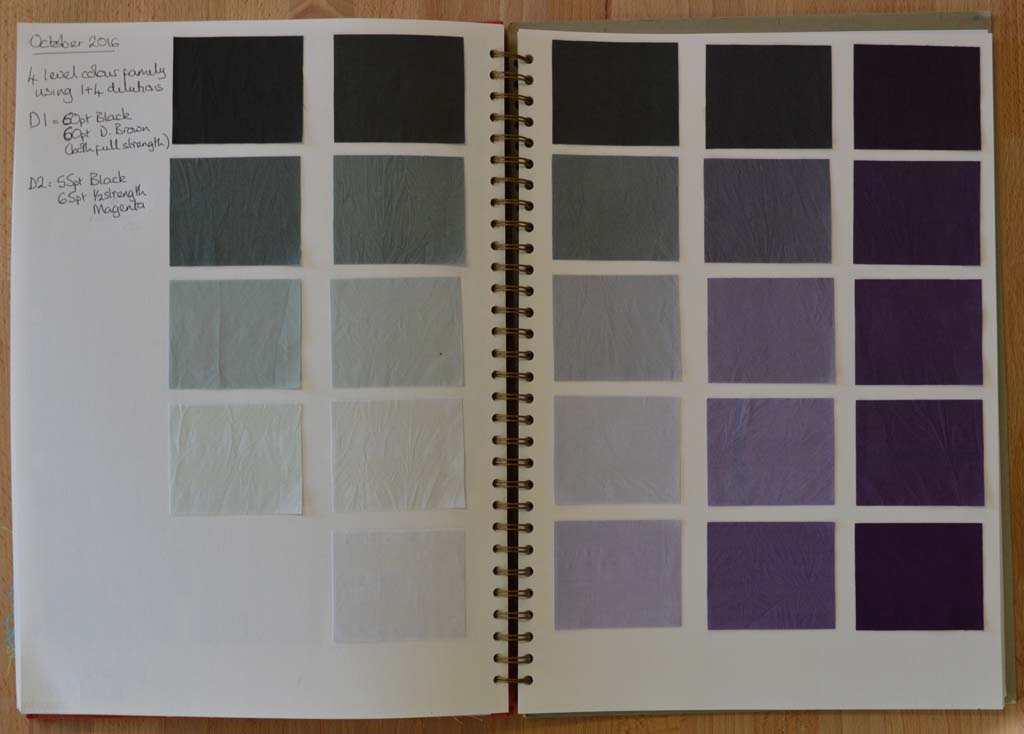 After multiple attempts I am now happy with my new colour family. I am calling it 'traces' as I'm hoping to use it to create a new body of work based on iconic industrial buildings that no longer exist. I spent my childhood summers staying with my grandparents in a small village north of Nottingham. The area was criss-crossed with coal seams and every journey took us past pit heads. These buildings don't exist anymore but I bet most people my age who spent time in the north of England know exactly what I am thinking off.
After multiple attempts I am now happy with my new colour family. I am calling it 'traces' as I'm hoping to use it to create a new body of work based on iconic industrial buildings that no longer exist. I spent my childhood summers staying with my grandparents in a small village north of Nottingham. The area was criss-crossed with coal seams and every journey took us past pit heads. These buildings don't exist anymore but I bet most people my age who spent time in the north of England know exactly what I am thinking off.